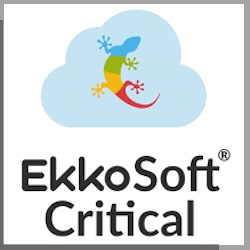Healthcare is often seen as trailing other industries in terms of its sustainability efforts. Some say this is because healthcare organizations have faced less regulatory pressure than many global, publicly held companies.
There’s another reason for this perception, however: “hidden” sustainability. The fact is, many healthcare organizations have long-standing programs that have delivered environmental, social and governance (ESG) value—however, they’ve often failed to quantify and position that value in sustainability terms.
Healthcare sustainability programs can be hidden for a variety of reasons:
- The organization doesn’t recognize or organize the program under a sustainability umbrella.
- The program was initially launched to address another important objective like greater health equity or responsible investing.
- The program may have an explicit ESG focus, but it remains hidden because it is managed within a single business function.
When healthcare payers and providers fail to link these hidden efforts to an enterprise-wide sustainability mission, they are missing a huge opportunity to deliver broader business and societal value.
By taking a few key steps, however, healthcare organizations can move from a low sustainability maturity level—marked by limited, siloed and scattered programs with function-specific impact, measurement and reporting—to the highest maturity level. This level is characterized by an integrated portfolio of activities spanning the organizational ecosystem, with strong governance and tools to model scenarios and manage risk.
Developing a sustainability strategy in healthcare
Here’s an example of hidden healthcare sustainability. Hospitals have saved millions of dollars through improved energy management. While these programs often reduce emissions and improve community health, providers rarely track that impact in their operating metrics. Indeed, according to an energy analysis and report released by global nonprofit Health Care Without Harm, Boston-area healthcare facilities reduced their greenhouse gas emissions by 18% from 2011 through 2019, despite serving more patients and expanding facility space, thus improving health equity. The report estimates this reduction will cut social costs such as health and climate impacts by $20.6 million, prevent 836 lost or restricted workdays and 1.3 fewer premature deaths per year.
From a healthcare payers’ standpoint, organizations have worked to support optimal health services utilization, which can contribute to a healthy local workforce and economic vitality, impacting multiple aspects of social sustainability.
To get a greater ESG impact from programs like these, organizations need to understand and manage them across the enterprise. That requires breaking down silos and reducing the scattered nature of operational responsibility. It also requires effective change management as end-to-end processes introduce new ways of working and accountability.
For example, a switch to reusable devices in operating rooms can improve sustainability. It also requires change, not only for surgical teams but also for supply chain, quality, finance and compliance functions, as well. Enterprise-level business metrics that evaluate impact across all functions are essential and drive the greatest improvements. By getting consensus and an understanding around what data to collect and how to report it, leadership can track performance, boosting business impact.
Enterprise sustainability in healthcare
Becoming a sustainable enterprise, then, requires new operating models supported by new data flows and information systems. In our experience with clients, the three essential steps are:
- Conduct an enterprise-wide review of all initiatives and programs that align with an ESG framework, even if they weren’t implemented under a formal ESG agenda. Then perform an enterprise opportunity gap analysis, asking questions such as:
- Is the business impact of all programs measured and reported using enterprise sustainability measures?
- Have the operational synergies among all sustainability-relevant programs been identified and aligned, using end-to-end process flows and value streams?
- Is a defined or confirmed set of enterprise business metrics used to evaluate business impact of all sustainability-aligned programs? Examples include reducing carbon footprint, reducing the negative community health impacts of business operations, and increasing employee diversity to ensure economic equity while acquiring needed skills and expertise.
- Develop management systems and reporting processes to measure, track and report on the defined metrics and business impact of sustainability. This includes defining end-to-end enterprise processes, establishing clear leadership accountability, and implementing or integrating technology systems that collect, analyze and present operational metrics.
- Extend operations and reporting beyond the enterprise to include ecosystem partners. This is important because 80% of healthcare’s CO2 emissions, as one example, are primarily derived from supply chain functions such as the production, distribution and disposal of pharmaceuticals, medical devices and food.
Shining a light on healthcare sustainability
By designing, managing and measuring sustainability as a cohesive, enterprise-wide portfolio, healthcare organizations can elevate their sustainability programs, making them both more visible and more effective. Doing so will improve financial performance, reduce costs and risks, and enhance brand reputation, all while better positioning the company to comply with existing and emerging regulatory mandates.
Just as important, sustainability-driven healthcare organizations create a future in which their enterprise thrives while simultaneously helping the communities they serve to flourish.
Author Frances Dare is senior director for healthcare consulting at Cognizant. Related: Read more Cognizant guest blogs.




